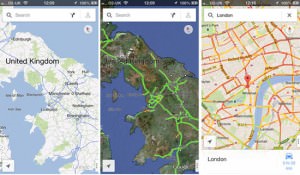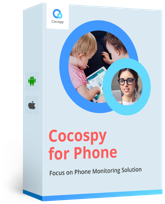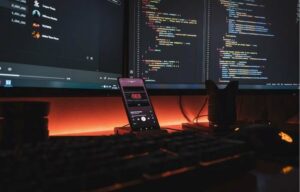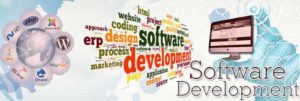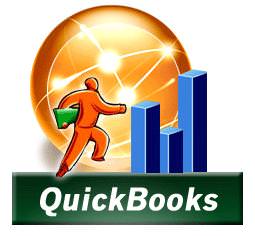Assessing the Costs of Medication Tracker Application Development
In this article, we are going to explore the factors affecting the Internet of Things development costs, which include hardware design and certification and the expenses associated with creating a full-scale software infrastructure for connected devices a little further and move the focus to smart healthcare solutions — namely, automated medication dispensers.
Types of Medication Tracking Devices: Robust Functionality Increases Software Development Costs
IoT-enabled medication trackers, reminders, and dispensers vary in type, form, and complexity. Consequently, they have different security and performance requirements, which might influence the gadgets’ design, prototyping, software development, and commercialization costs.
![]()
Functionality-wise, it is possible to divide medical trackers into several categories:
- Proximity-based medication monitoring systems— i.e., gadgets powered by accelerometers, gyroscopes, temperature, and motion sensors — track temperature-sensitive medication storage conditions and location and conduct autonomous inventories, and send alert notifications to patients and caregivers via a dedicated mobile app. Examples of such healthcare solutions include the MedAngel thermometer for insulin, CenTrack Asset Tags, and Temptime monitoring devices for pharmaceutical companies.
- Stationary or wearable medicine dispensers and remindersare designed to reduce medication non-adherence, which accounts for 10-25% of hospital admissions in the USA alone. Stationary devices are usually physically locked and release the prescribed dose of medication regularly and only to a particular patient. The feature set of such gadgets may include notifications and reporting, the integration with EHR management software, advanced access control mechanisms (often based on biometrics technology), computer vision, and voice recognition functionality. Wearable solutions — for instance, neck-worn devices which use piezoelectric or acoustic sensors to determine whether a pill has been swallowed — improve medication intake in children and senior patients.
- Ambient assisted living (AAL) devices— for example, wearable injectors — deliver medication into a patient’s body, measure vital signs to facilitate well-informed decision making, provide an overall picture of medication use, and notify patients in case of emergency. A typical example of a wearable injector is a connected diabetes management device paired with a mobile application that regularly tests glucose levels and administers basal and bolus insulin.
Technology-wise, medication tracking devices of different types rely on other connectivity technologies, use different cloud architecture patterns, and possess sonically different cognitive abilities.
- Computing power & data acquisition. Stationary electronic pill organizers usually have enough RAM to record medication-taking events, collect and process significant amounts of data on the device level and store it locally when there is no connection to the cloud or base station. Battery-powered devices tend to have a lower memory footprint and are therefore reliant on collective sensing technologies and the software infrastructure to ensure information quality and provide the desired level of performance.
- Type 1 and 3 devices, as well as neck- and wrist-worn trackers ensuring medication intake, use low-power technology — typically Bluetooth, NFC and RFID — to collect and transmit data at regular intervals to optimize battery life. The gadgets of the second type usually connect directly to a home or hospital Wi-Fi network and may therefore process and store larger amounts of data closer to the edge.
- Security & certification. To prevent tampering and secure sensitive data, digital health companies must introduce advanced user authentication and authorization methods, use reliable hardware and open-source software components, implement encryption algorithms and enable over-the-air (OTA) firmware updates. Certification is another issue to be considered by IoT healthcare startups during the product ideation stage. Meeting HIPAA, HL7, FDA, and ISO 13485:2016 requirements are obligatory for all devices which have direct access to patient records and administer medications. According to Pavel Shylenok, CTO at R-Style Lab, the efforts associated with medication tracker apps’ certification — web, mobile, and low-level software included — could well amount to $ 70-100 thousand, while the inclusive costs of hardware certification may range from $ 300 thousand to one million dollars.
Recent advances in connected technology have had a revolutionary impact on the diagnosis and management of health conditions. However, healthcare software companies still have a long way to go for medication tracking devices to be used in varied contexts and make a broader impact.
The major factors that undermine further adoption of such devices and affect medication tracker application development costs are reliability, energy consumption, and security. Although today’s smart healthcare solutions are mostly a trade-off between hardware-related inefficiencies and the level of automation and convenience the devices provide, this problem can be successfully addressed at the software level — provided you entrust your project to an experienced vendor.
How Much Does It Cost to Create a Smart Medication Monitoring System?
Back-end Infrastructure for an Automated Medication Dispensing System
To enable intelligent medication monitoring, it is necessary to ensure continuous sensor data acquisition, exchange, and processing. For this purpose, we should first integrate low-level software that powers a connected device — i.e., an embedded operating system or firmware — with a cloud-based infrastructure and mobile applications on the API or connectivity level.
Most IT companies that provide healthcare software development services suggest that you don’t get over-reliant on popular cloud managed services providers such as AWS and Google Cloud. Although it is highly unlikely that the cloud computing tycoons would discontinue the services in the foreseeable future, medical software should be created with scalability, extensibility, and portability in mind.
Back-end Infrastructure Technology Stack & Software Development Estimates
- When it comes to IoT, traditional programming languages used in web development — i.e., PHP, Python, and Ruby — often fail to provide the desired level of performance. The Internet of Things concept relies on real-time connectivity and portability; therefore, choosing modern technologies such as Go, Node.js, AWS IoT, and MQTT is highly advised since they provide persistent connectivity between edged devices and central hubs.
- In order to move data processing capabilities closer to the edge of the network and ensure medication and patient information availability in offline mode, your vendor may develop custom firmware that uses the C/C++ and Mongoose OS or FreeRTOS technologies designed for efficient memory usage, OTA updates, and increased security.
The cost of building a cloud-based infrastructure enabling the business logic of an automated medication dispensing system and providing an API for further integrations could amount to $ 30-40 thousand; depending on the system’s complexity and hardware requirements, the embedded software development efforts could total to $ 20-100 thousand.
The back-end part of the solution also features web-based admin and user dashboards — typically the PHP/MySQL stack plus JavaScript front-end frameworks for effective data visualization — which allow healthcare providers and patients to manage a network of connected medication trackers and conveniently access the information, respectively. The admin panel software development efforts could be estimated at $ 10 thousand.
Mobile Applications Enabling Fault-free Medication Monitoring
Regardless of the type and complexity of a medication tracking solution, mobile apps are essential to ensuring product usability and commercial success. Given that electronic pill organizers often display limited processing capabilities and offer smaller screen space, smartphone and tablet applications enable device set-up, support secure user authorization, and provide on-the-fly access to critical data.
Feature Set of a Medication Tracking Mobile Application
- Device management module,which establishes device-to-application pairing via BLE or Wi-Fi.
- Login & authorization functionality;two-factor authentication and biometric access control are desirable.
- Notification system,which makes use of pop-ups and sound alerts and allows users to manually set up reminders.
- Information module designed to provide on-demand access to a patient’s healthcare records, prescription drug information, and medication intake data. Applications for devices that fall under the AAL category and therefore visualize large amounts of sensor data in real-time typically utilize custom-developed essential data protocols with persistent connectivity to optimize CPU usage since traditional APIs often introduce a significant lag between sensor data processing and rendering.
The technology stack would thus feature native mobile application development tools — preferably Swift and Kotlin — while the developers’ efforts could be estimated at $ 250-280 thousand for a two-platform pill management app (iOS, Android).
Software for an Automated Medication Dispensing System: Final Estimates
In the end, we’ve arrived at an impressive figure — $ 310-430 thousand (excluding certification costs) for cloud, web, and mobile software essential for a medication tracking device to be eligible for commercialization.
Mind that the estimates we’ve provided above are by no means final, as the software feature set may vary depending on the desired functional behavior of a medication tracker, the integration with third-party solutions, and the hourly rates of a software development services company you’ll address. The costs, however, could be optimized by creating the entire software infrastructure — embedded, cloud, web, and mobile applications — in a single-vendor environment. The approach allows hardware startups to manage change requests more effectively, foster collaboration with the vendor, and reduce time to market.
